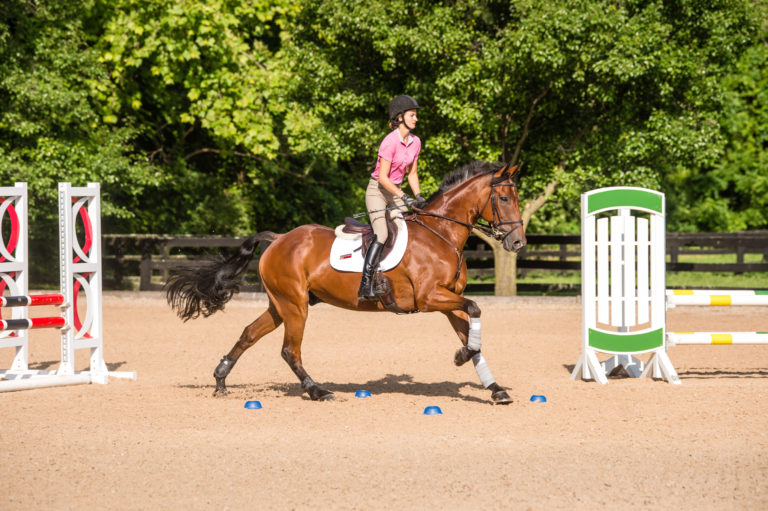When I’m at a horse show where I see a few hundred riders, whether I’m judging or training, I often think that out of all of them, only a few make it look easy. Only a few! What is the problem that so many of the remaining riders have? What is the difficulty they are struggling with? Why are their rounds uneven in pace as well as jumps? Lack of control is something I jot down often on my judge’s card for adult and young rider classes, but why? I believe it is because these riders are obsessed with trying to find or create a good distance. In doing so, they misjudge and make the horse nervous. Abrupt, late decisions can make any horse nervous and strong.
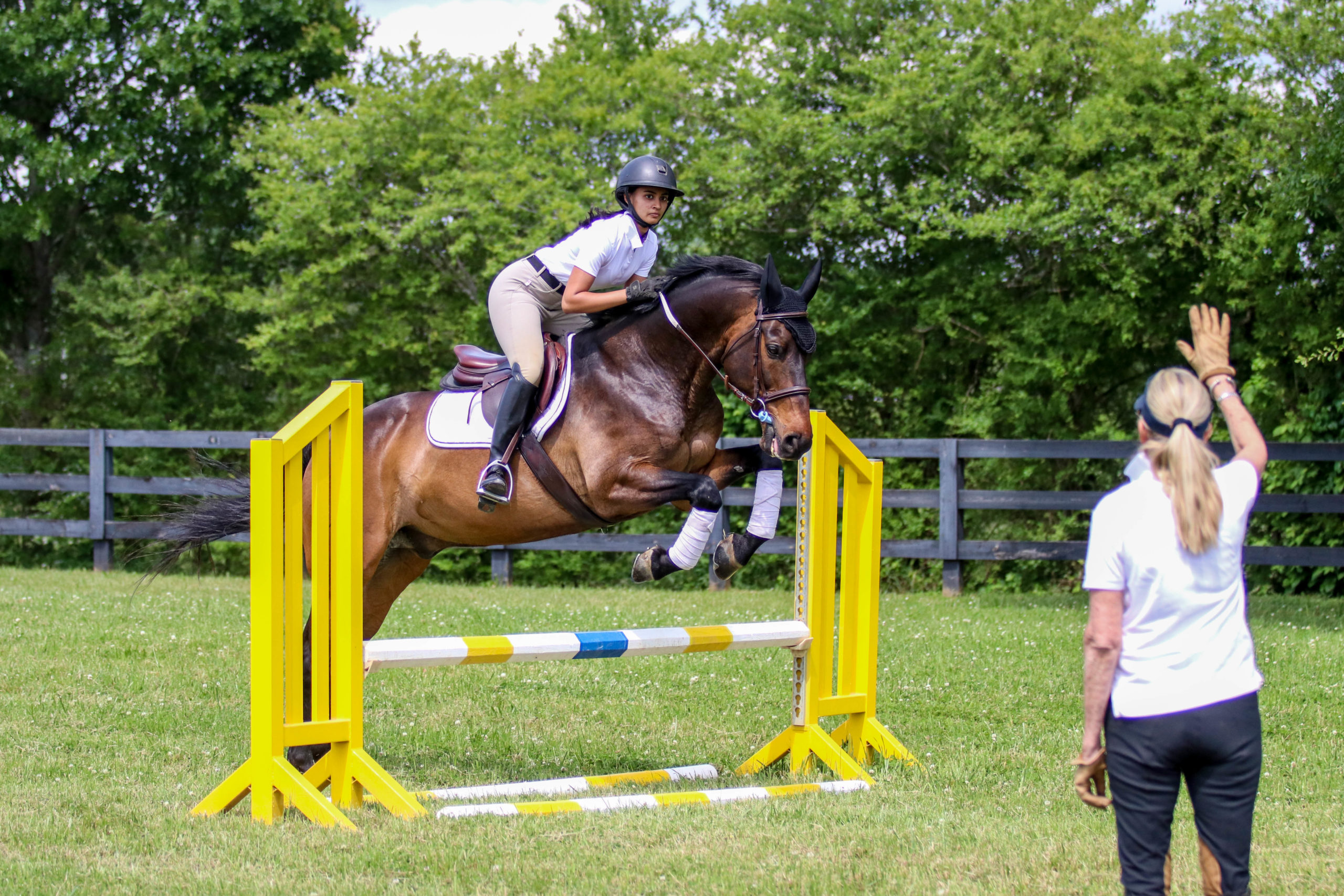
When the person overrides, invariably the horse gets stronger on the backside of the jump. If the rider misjudges and chips to the first jump of the line and then overrides to get the right number of strides down the line, it produces a strong horse for the rest of the course.
The problem is that the majority of riders are hung up on the distance. Some trainers try to come up with clever ways and tricky lingo to help the nervous—and oftentimes desperate—rider, audibly count out loud when the horse is three strides away from takeoff. The trainer counts “one, two, three” while others count backward, “three, two, one.” I wonder what comes next if the trainer started counting too soon. Would the next stride be called “minus one”? All of this puts total focus on trying to guess when the moment of takeoff will happen. Kind of a feeling of blast off!
Another problem develops when unknowing riders are convinced they are helping their horses by telling them when to jump, when, in fact, they really don’t know. Unless the rider is very skilled and experienced, that can result in total confusion for the horse. Riders can start sending mixed messages, which results in a mess. In some cases, it would have been better if the riders had closed their eyes! I’m not really suggesting that, however, it would eliminate a lot of misguided signals.
If riders have experience, they can back up a solid distance, but for this discussion, riders who sit still and allow the horses to manage the distances are the biggest help to their horses.
OK, all that said, what can riders do?
They need to change their priorities when cantering to a jump, concentrating on a consistent rhythm, rather than searching for a distance. Number one is starting off with a nice, forward rhythm. Then they need to maintain it—not allowing the canter to change by slowing down or speeding up. They must concentrate on that, not the distance. As long as riders maintain their own balance and keep the rhythm, the distance will be safe. The horse will be happier as well, and the canter will continue to be the same pace on the backside of the jump. As my former husband used to say, “Jumping is flatwork with jumps in the way.”
I’ll describe four exercises to achieve this.
Exercise 1: Trot and Canter Through the Standards
Setup: Build a vertical jump with a ground pole, then take the pole and ground pole out so it’s just the two standards. Set it so you can canter at least four strides in a straight line before and after it. (You can also set the vertical so you can jump it on a big circle or a figure-eight pattern.)
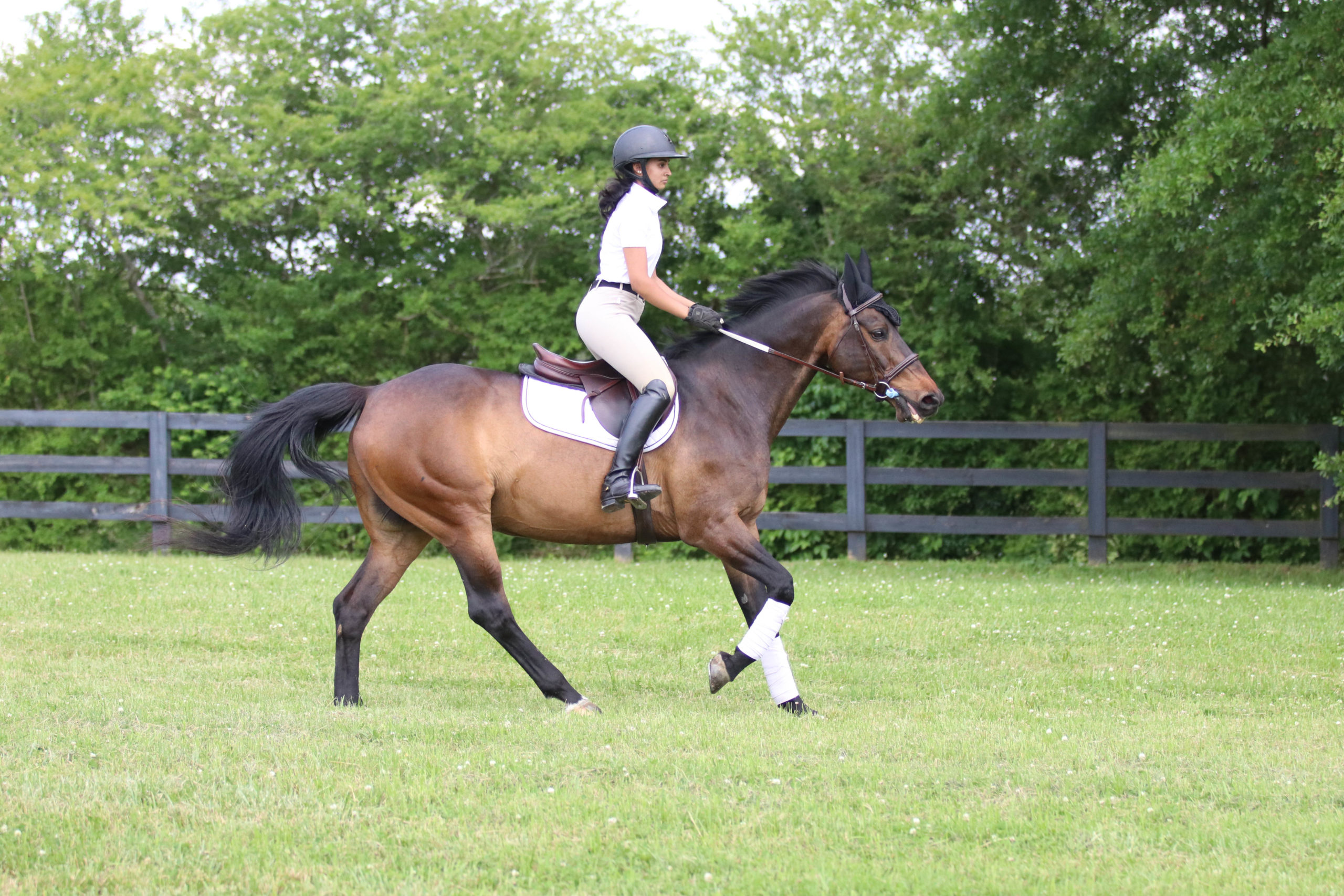
- Pick up a posting trot and establish a forward, steady rhythm on a circle at one end of the ring.
- Once that’s comfortable, look between the standards and trot a straight line through the center of them. All the way on the approach, focus on maintaining the same trot rhythm, pace and straightness. Make every trot step the same. Doing this is easier without the distraction of an actual jump, but the standards give you the feeling of coming to a jump.
- After your horse trots through them, reverse and repeat the exercise in the opposite direction.
- When your horse feels comfortable, pick up a nice slow, relaxed canter and rise into what I call a modified two-point position.
- Canter a circle and then look through the center of the standards and ride a straight track through them, maintaining the same canter rhythm and pace. Focus on maintaining your two-point position. After your horse canters through them, turn around and repeat the exercise. When that feels comfortable, move to the next exercise.
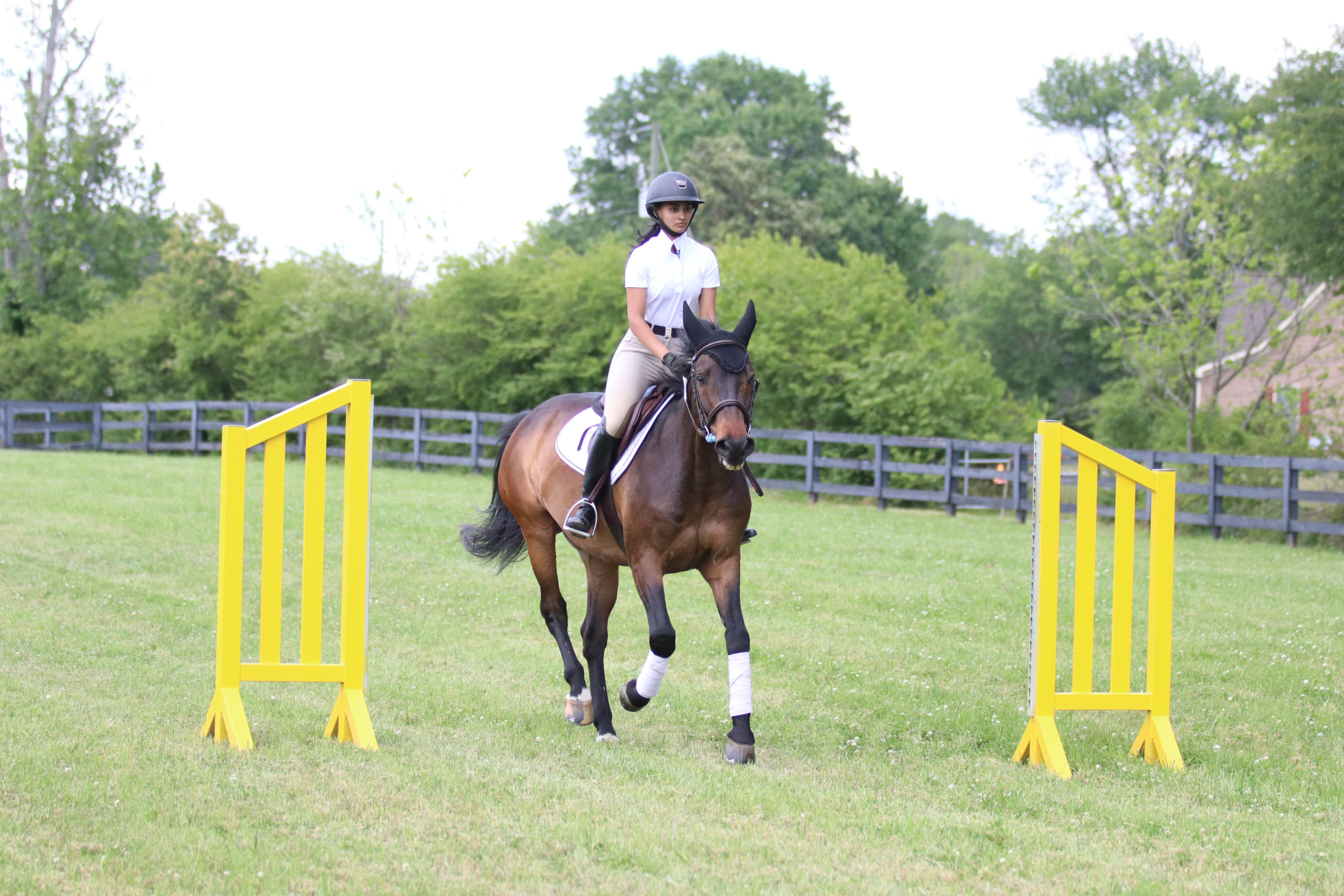
Exercise 2: Canter Over a Ground Pole
Setup: Place a pole on the ground between the two standards in the previous exercise.
- Establish the same canter that you had going through just the standards and pick up the two-point..
- Approach the pole, maintaining the rhythm, pace and straightness of the canter all the way to it. Do not worry about a distance. As you ride to the pole, look down at it. This is for depth perception. If somebody throws you a ball, you can’t catch it unless you’re looking at it. If you’re not looking at the pole or jump, there’s no way of measuring with your eye how you’re going to meet it. You can’t see a distance if you’re looking somewhere else. When you feel your horse has sighted in on it, raise your eye and focus on a point at the end of the arena at eye level.
- Stay very still and very soft with your position and let your horse canter over the pole. If he hops or jumps over the pole, go with his motion but don’t jump ahead.
- Turn around and repeat the exercise. Once you can maintain a steady rhythm over the pole, try the next exercise.
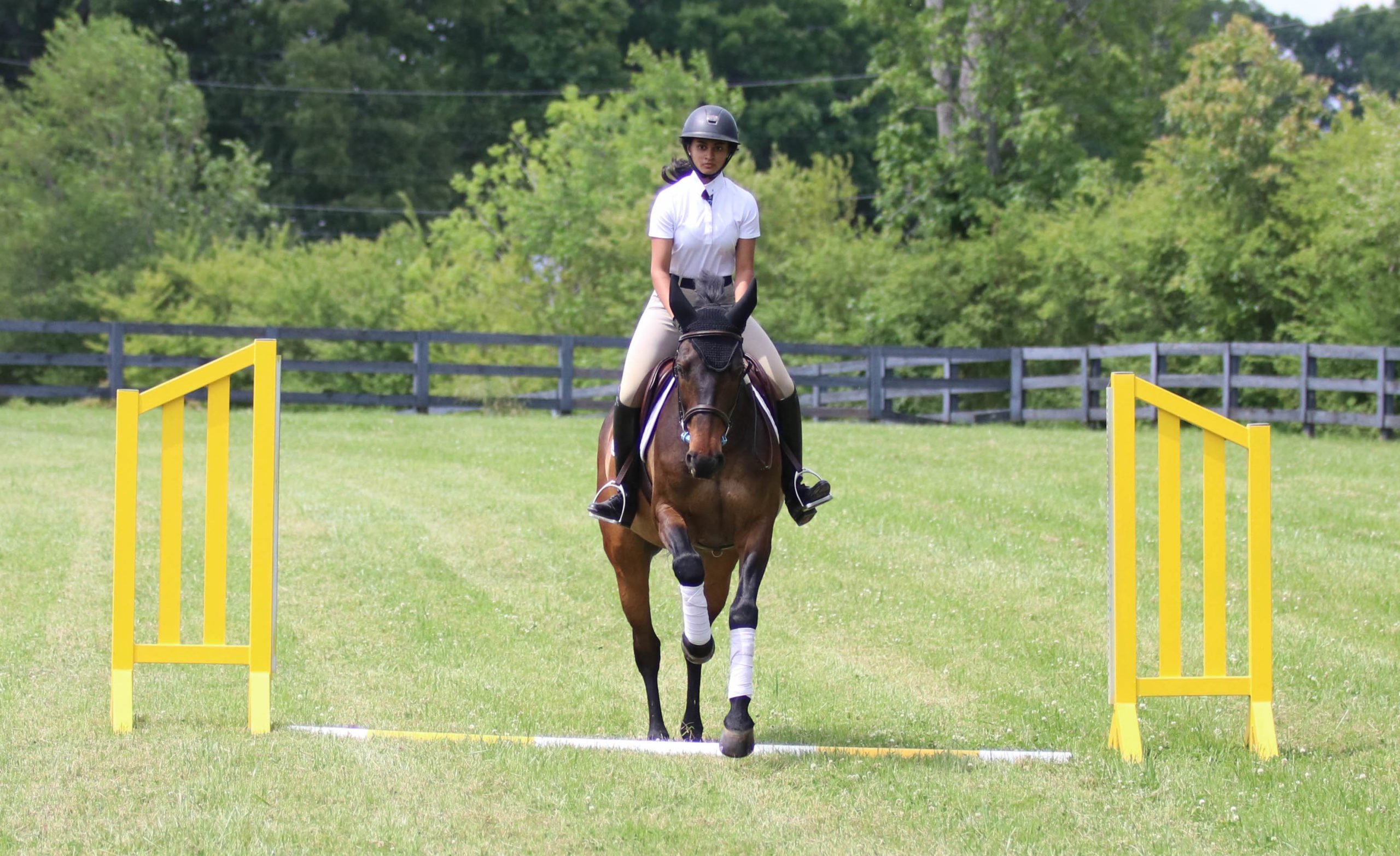
She does not worry about “seeing a distance.” © Julia Murphy
Exercise 3: Canter Over a Small Jump
Setup: Build a small vertical between the two standards with a ground pole on each side.
- Establish a nice canter rhythm, rise into two point and approach the fence, thinking about keeping the rhythm the same and maintaining your position. Do not worry about the distance. Your horse will be able to adjust his stride if you stay in balance.
- Look at the jump until you know that your horse has sighted in on it and then raise your eye to look at something at eye level at the end of the arena.
- Allow your horse to jump up to you. You are already in the position for the jump, therefore there is no need to change your position as your horse leaves the ground. Leaning forward will cause you to be ahead of his motion, increasing the possibility that your horse will jump it poorly.
- Turn around and repeat the exercise.
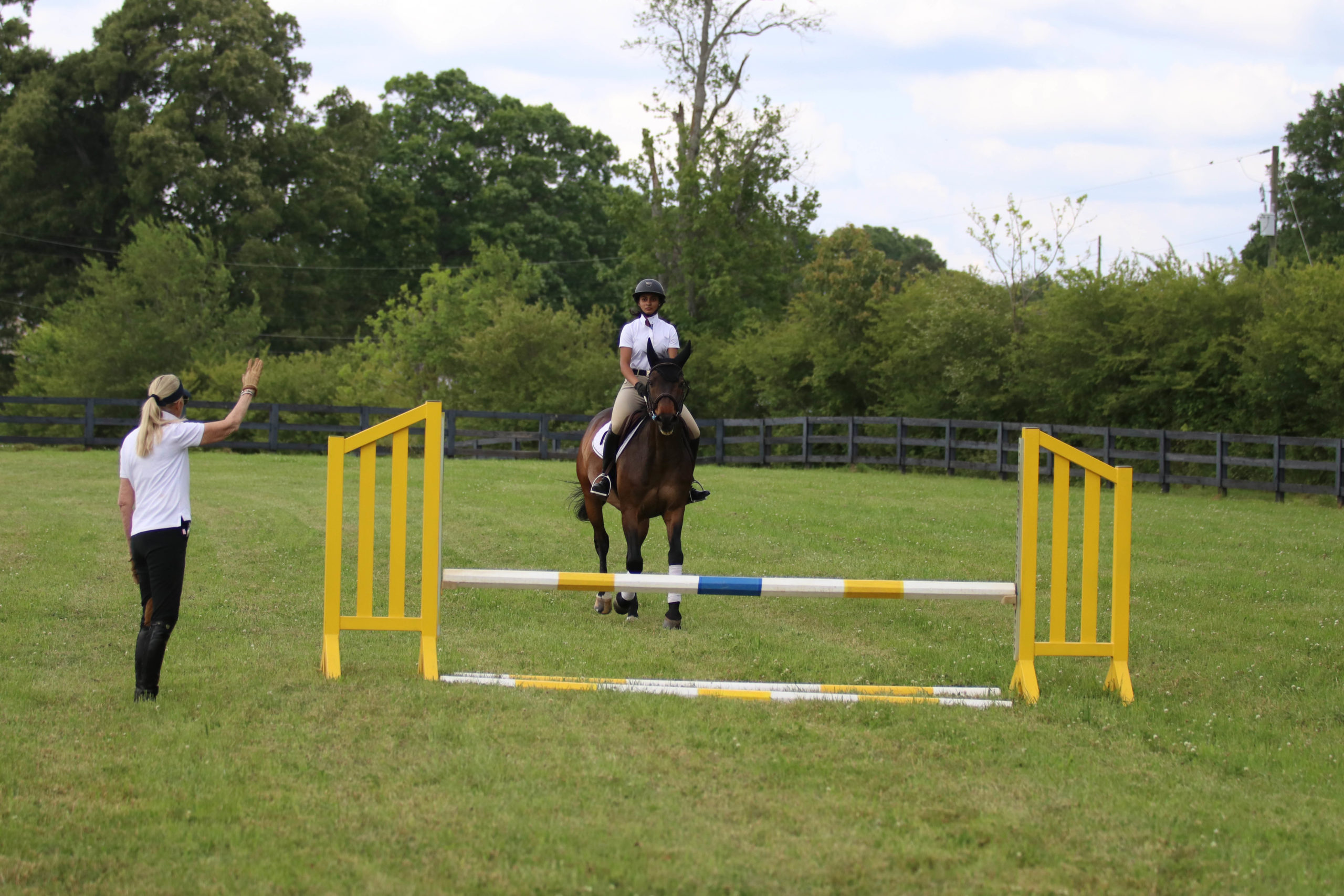
Exercise 4: Canter and Look Away From the Jump
Even after practicing the exercises above, some riders get nervous jumping and they start making adjustments on the approach that aren’t necessary. They gun their horses or take back so they don’t get to a comfortable takeoff spot to the jump. At that moment, their emphasis is not on rhythm and balance to the jump. When I have a rider who does that, I have them work on the following exercise:
Setup: Have a trainer or friend stand four strides on the landing side of the vertical in Exercise 3. When you are a few strides in front of the fence, she will raise her hand.
- Pick up a balanced and relaxed canter and approach the vertical as you did in Exercise 3. Maintain the same rhythm and pace and focus on straightness and your two-point position. Make no adjustments to your horse’s stride.
- A few strides in front of the jump, have your trainer or friend raise her hand. Look at her hand while riding the same rhythm, pace and track.
- Continue to look at your trainer or friend’s hand until you pass her.
- After you are comfortable with this, ask your trainer or friend to gradually move to the side of the jump. At this stage, the jump is almost out of your sight. Hold your position and allow your horse to jump the low fence on his own.

As you work on this exercise, your horse will be helped by your lack of interference. Because you are looking at your trainer or friend, you can concentrate only on the rhythm, not the distance. The best part of this exercise is that, providing you follow these directions, the jumps come up smoothly. If there is any variation in distance, it’s very minor and eye-opening because you start to understand how by simply staying still and keeping an even rhythm, the outcome is infinitely better. It always works. It’s almost like magic!
After you experience the benefits of not making big adjustments, the rewards become very apparent and it’s easier to sit still and do less!
Stay on the rhythm and ride like a rock star!
About Holly Hugo-Vidal
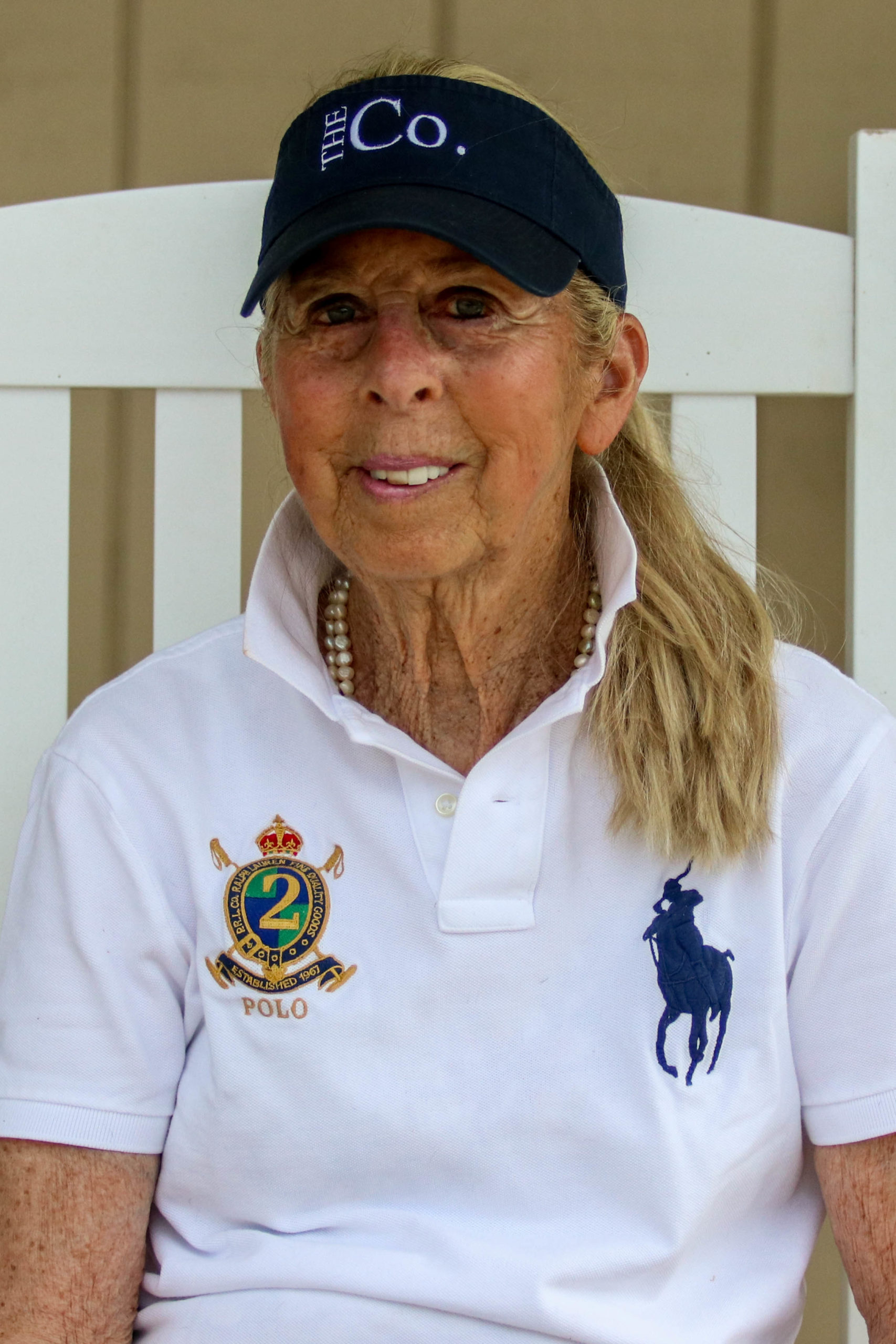
Based out of Scott and Nancy Boggio’s Arbor Hill Farm in Canton, Georgia, Holly Hugo-Vidal maintains a busy schedule with her junior and adult riders as well as giving clinics and judging. With her former husband, Victor Hugo-Vidal, she ran the successful show barn, Cedar Lodge Farm, in Stamford, Connecticut, learning from his ability to help anyone with a desire to accomplish his or her goals. Her next mentor was show jumper Rodney Jenkins, who provided her with lessons in reading horses and creating in them a desire to please. She is the author of the book Build Confidence Over Fences!








